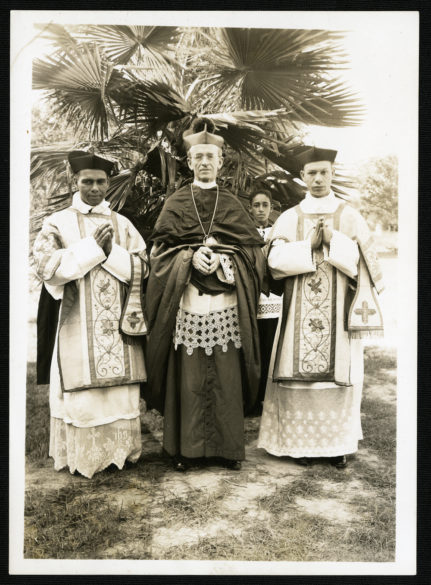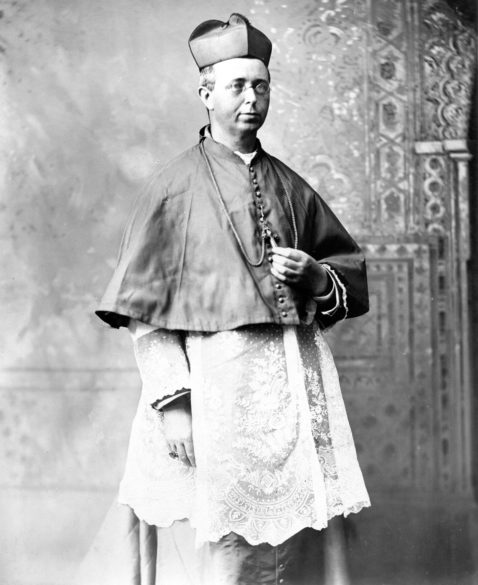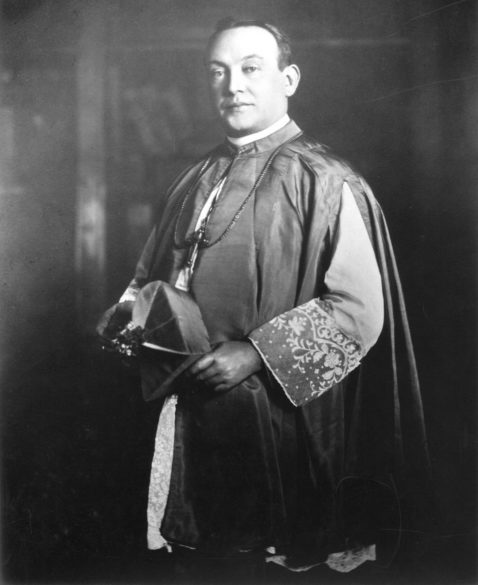From the Archives
By Mary Woodward
JACKSON – Not many people are aware that the first seminary for African American candidates to the priesthood began in Greenville, Mississippi at Sacred Heart Parish in 1920. A small group of devoted young men were formed in the attic of the original school building there.
In 1923, the seminary moved to Bay St. Louis to the newly established St. Augustine Seminary built by the Society of the Divine Word priests (SVD’s) after years of dialogue with Bishop Thomas Heslin and after his death in 1911, Bishop John Gunn.

Bishops Heslin and Gunn had a strong desire and mission to evangelize and grow the faith in the African American communities of Mississippi. A large percentage of African Americans in those years were former slaves and children of slaves. A good number had been catechized in the Catholic faith and baptized by the earlier Bishops of the diocese.
Bishop Heslin and his successor Bishop Gunn saw a real need for this growing Catholic community to have priests from their own ranks. At the turn of the 20th century, Bishop Heslin invited the SVD’s to serve in the diocese and establish missions to specifically serve African Americans.
The SVD’s, founded in 1875 by Rev. Arnold Janssens in the Netherlands, first arrived in the U.S. in 1897 near Chicago. A few years later in 1905, they found themselves in Mississippi establishing these missions and growing the faith – the earliest of these being Vicksburg St. Mary, Jackson Holy Ghost, and Yazoo City St. Francis. They also would be in Meridian, Indianola, Mound Bayou and Clarksdale along with many smaller missions that have been absorbed by larger parishes throughout the years.
Getting back to the first seminary, the point of dialogue made more than 100 years ago was, the seminary training for these young men of color should be done by a religious order and not at a seminary forming diocesan clergy.

One may think this is an obvious choice because the SVD’s had a charism to serve the African American community, but actually, that was an afterthought according to correspondence in the archives. Both Bishop Heslin and Bishop Gunn believed the current diocesan clergy being ingrained in the culture and climate of the diocese would not be accepting or welcoming of African American priests among their ranks.
Rectory-living would have been considered illegal if black and white priests were assigned together. The Jim Crow laws and culture of intimidation are far too complex to address in an archives column. I will share the following from David H. Jackson’s section in the Mississippi Encyclopedia:
“After 1877 African Americans lost their political rights in Mississippi through intimidation, fraud, and outright murder, and racial segregation became largely a matter of custom. According to historian Neil McMillen, ‘Mississippi seems to have had fewer Jim Crow laws during the entire segregation period than most southern states.’ Wherever they turned, black Mississippians faced segregation. More often than not, Jim Crow customs required both separation and exclusion. The state legislature passed laws segregating trains in 1888 and streetcars in 1904. At weddings and funerals, in courtrooms, public facilities, and other places used for social gathering, habit kept the races apart. The code of racial etiquette prohibited any form of interracial activity that might have even remotely implied equality. Nonetheless, blacks were more concerned with having equal access to facilities than they were with integration per se.”
“In 1890 the Mississippi legislature called a constitutional convention expressly to disfranchise blacks. The Second Mississippi Plan emerged from this meeting, imposing literacy requirements, poll taxes, and laws denying the vote to anyone convicted of bribery, arson, murder, theft, or burglary — crimes for which African Americans were much more likely to be convicted than whites. Following Mississippi’s lead, other southern states began to enact laws to deny blacks the franchise. The US Supreme Court’s decision in Williams v. Mississippi (1898) added to African Americans’ political impotence by denying them federal civil rights law protection.”
As we have explored in previous columns, blacks and whites were together sacramentally in the early days of the diocese. This continued even after the Civil War, but when the protections of reconstruction were gone, segregation took hold fiercely.

In navigating these evil circumstances, Bishops Heslin and Gunn found a way to persevere in serving the African American community by arranging for the SVD’s to establish a seminary for black men to study for the priesthood and serve in their own communities. Following the path of their times to establish a parallel society, these two bishops opened the door to the empowerment of the African American Catholic community in our diocese and in the United States.
Seeing the need for black Catholics to see the face of Christ as a familiar one was a profound step in the journey of faith and justice in our state. Looking back on this effort, it seems to have been a calculated move in the hopes of growing a better future for the African American community and for the universal church. And it all started in the Mississippi Delta.
(Mary Woodward is Chancellor and Archivist for the Diocese of Jackson.)
